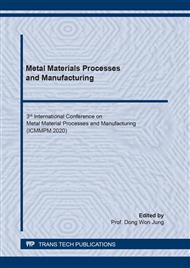p.51
p.59
p.65
p.71
p.79
p.85
p.91
p.97
p.105
Effects of Input Parameters on Electrode Wear Rate when EDM Cylindrical Shaped Parts
Abstract:
In electrical discharge machining (EDM) process, the selection of suitable EDM factors plays an important role since this can achieve the growing need for quality, minimizing manufacturing cost and time, and reducing electrode wear rate. This paper presents the effect of input factors on electrode wear rate (EWR) when machining cylindrical shaped parts made from 90CrSi steel and an optimization of these parameters. The input EDM parameters include the pulse on time, the pulse off time, the current, and the spark gap voltage. The Taguchi method with L27 was used for designing the experiment to gather data. Based on statistical analysis of experiment data, the impact of the input factors on the EWR was investigated. Moreover, the optimal input parameters were found by evaluating the S/N ratio in order to minimizing the EWR. This brings the significance in minimum surface roughness and high accuracy of machining elements.
Info:
Periodical:
Pages:
79-83
Citation:
Online since:
January 2021
Keywords:
Price:
Сopyright:
© 2021 Trans Tech Publications Ltd. All Rights Reserved
Share:
Citation:


